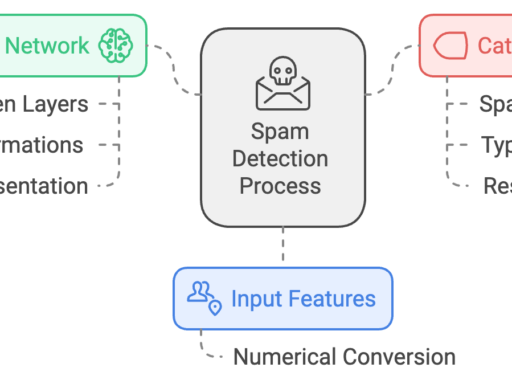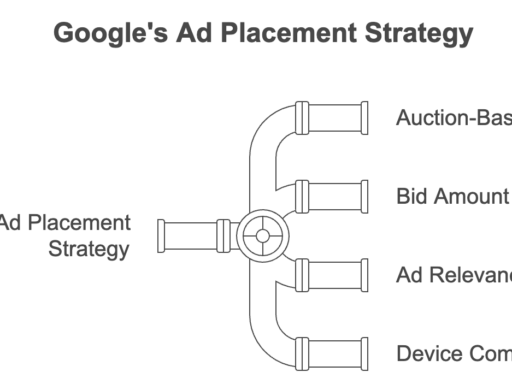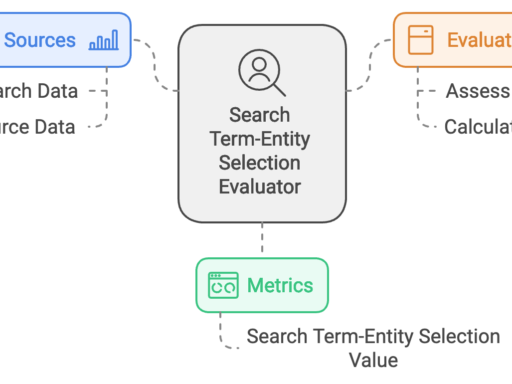Last Updated on %post_modified% by %author_name%
BACKGROUND
Travel search engines and image selection systems currently provide static images for points of interest (POIs) without considering real-time user preferences, contextual variables, or seasonal relevance. Such systems lack personalization and fail to adapt to evolving user preferences or diverse situational contexts, resulting in suboptimal engagement.
This specification addresses the shortcomings of existing systems by introducing a method that dynamically ranks and recommends images for POIs based on real-time contextual data, including user preferences, weather conditions, and activity relevance. This innovation offers a personalized and context-sensitive approach to image recommendation for travel and navigation applications.
SUMMARY
The disclosed method dynamically selects and ranks images for points of interest (POIs) using a context-aware algorithm. The method involves collecting real-time user data, environmental context, and historical image relevance scores. It ranks images based on a combination of visual quality, contextual relevance, and predicted user engagement.
The key aspects include:
Context Data Aggregation: Integrates data such as user preferences, current location, weather, and time of day to generate a context profile.
Image Metadata Analysis: Evaluates image attributes (e.g., location tags, timestamps, and activity markers) to determine contextual fit.
Dynamic Ranking Algorithm: Uses machine learning models to assign scores based on context and relevance, dynamically updating rankings in real time.
Personalization: Adapts image recommendations to individual user profiles using historical preferences and demographic insights.
This method improves engagement by providing users with images that are visually appealing, contextually relevant, and aligned with their travel or exploration goals.
System Architecture
The method is implemented as part of a travel recommendation system comprising the following components:
User Context Module: Collects real-time user data, including location, preferences, and recent interactions.
Environmental Context Module: Integrates real-time environmental data, such as weather, local events, and seasonal trends.
Image Metadata Store: Maintains a database of images annotated with geographic, temporal, and activity-related metadata.
Ranking Engine: Executes the image scoring and ranking algorithm.
Methodology
Step 1: Context Profile Generation
The system collects and processes real-time data to generate a context profile for the user. This profile includes:
Location Data: GPS coordinates, city, or region where the user is currently located.
Environmental Factors: Weather conditions, time of day, and seasonal attributes.
User Preferences: Historical interactions, travel preferences, and favored activities (e.g., hiking, dining).
Step 2: Image Pool Selection
The system queries the Image Metadata Store to retrieve candidate images for the POI. These images are pre-annotated with:
Geographic Tags: Indicating proximity to the POI.
Timestamps: To identify seasonally appropriate images.
Activity Indicators: Such as hiking trails, landmarks, or cultural events depicted in the image.
Step 3: Relevance Scoring
The ranking engine evaluates each candidate image against the context profile. The score is determined using:
Visual Quality Metrics: Image resolution, clarity, and color balance.
Context Fit: Degree of alignment with the current context profile (e.g., images showing sunny weather during a sunny day).
Engagement Prediction: Machine learning models trained on historical user engagement data predict the likelihood of user interaction.
Step 4: Dynamic Ranking
The ranking engine combines the relevance scores to generate a dynamic ranking of images. The algorithm prioritizes:
High visual quality images.
Images most aligned with the user’s context and preferences.
Unique or rare images that provide novelty.
Step 5: Recommendation Delivery
The top-ranked images are presented to the user via the interface. The system continuously monitors user interaction to refine future recommendations.
EXAMPLE IMPLEMENTATION
Scenario:
A user in Paris, France, submits a travel query for nearby landmarks on a sunny afternoon. The system generates a context profile:
Location: Paris, France.
Time: 3:00 PM, local time.
Weather: Clear and sunny.
Preferences: Historical preference for outdoor activities and cultural landmarks.
The Image Metadata Store retrieves images tagged for landmarks in Paris. The ranking engine scores these images based on:
Sunny weather alignment.
Depiction of popular landmarks like the Eiffel Tower.
Visual quality and user engagement predictions.
Top images showing the Eiffel Tower with clear skies and vibrant surroundings are ranked highest and presented to the user.
CLAIMS
Contextual Metadata Analysis
The method of claim 1, wherein image relevance is determined based on metadata such as geographic location, timestamps, and activity tags.
Method for Context-Aware Image Recommendation
A method comprising:
Generating a context profile using user preferences, environmental data, and temporal attributes.
Retrieving a set of candidate images for a POI.
Scoring the candidate images based on visual quality, contextual relevance, and engagement predictions.
Ranking the images dynamically based on the scores.
Delivering the ranked images to a user interface.
Dynamic Ranking Algorithm
The method of claim 1, wherein the ranking algorithm dynamically updates scores based on changes in real-time data, including user context and environmental variables.
Personalization of Recommendations
The method of claim 1, wherein the scoring incorporates individual user preferences derived from historical data.
DETAILED DESCRIPTION
Overview
This method provides a personalized and context-sensitive mechanism for recommending images of points of interest (POIs). The system aggregates data from multiple sources, applies advanced ranking algorithms, and delivers tailored image suggestions to users through travel platforms and search engines.
System Architecture
The method is implemented as part of a travel recommendation system comprising the following components:
User Context Module: Collects real-time user data, including location, preferences, and recent interactions.
Environmental Context Module: Integrates real-time environmental data, such as weather, local events, and seasonal trends.
Image Metadata Store: Maintains a database of images annotated with geographic, temporal, and activity-related metadata.
Ranking Engine: Executes the image scoring and ranking algorithm.
Methodology
Step 1: Context Profile Generation
The system collects and processes real-time data to generate a context profile for the user. This profile includes:
Location Data: GPS coordinates, city, or region where the user is currently located.
Environmental Factors: Weather conditions, time of day, and seasonal attributes.
User Preferences: Historical interactions, travel preferences, and favored activities (e.g., hiking, dining).
Step 2: Image Pool Selection
The system queries the Image Metadata Store to retrieve candidate images for the POI. These images are pre-annotated with:
Geographic Tags: Indicating proximity to the POI.
Timestamps: To identify seasonally appropriate images.
Activity Indicators: Such as hiking trails, landmarks, or cultural events depicted in the image.
Step 3: Relevance Scoring
The ranking engine evaluates each candidate image against the context profile. The score is determined using:
Visual Quality Metrics: Image resolution, clarity, and color balance.
Context Fit: Degree of alignment with the current context profile (e.g., images showing sunny weather during a sunny day).
Engagement Prediction: Machine learning models trained on historical user engagement data predict the likelihood of user interaction.
Step 4: Dynamic Ranking
The ranking engine combines the relevance scores to generate a dynamic ranking of images. The algorithm prioritizes:
High visual quality images.
Images most aligned with the user’s context and preferences.
Unique or rare images that provide novelty.
Step 5: Recommendation Delivery
The top-ranked images are presented to the user via the interface. The system continuously monitors user interaction to refine future recommendations.
EXAMPLE IMPLEMENTATION
Scenario:
A user in Paris, France, submits a travel query for nearby landmarks on a sunny afternoon. The system generates a context profile:
Location: Paris, France.
Time: 3:00 PM, local time.
Weather: Clear and sunny.
Preferences: Historical preference for outdoor activities and cultural landmarks.
The Image Metadata Store retrieves images tagged for landmarks in Paris. The ranking engine scores these images based on:
Sunny weather alignment.
Depiction of popular landmarks like the Eiffel Tower.
Visual quality and user engagement predictions.
Top images showing the Eiffel Tower with clear skies and vibrant surroundings are ranked highest and presented to the user.
CLAIMS
Contextual Metadata Analysis
The method of claim 1, wherein image relevance is determined based on metadata such as geographic location, timestamps, and activity tags.:
Method for Context-Aware Image Recommendation
A method comprising:
a. Generating a context profile using user preferences, environmental data, and temporal attributes.
b. Retrieving a set of candidate images for a POI.
c. Scoring the candidate images based on visual quality, contextual relevance, and engagement predictions.
d. Ranking the images dynamically based on the scores.
e. Delivering the ranked images to a user interface.
Dynamic Ranking Algorithm
The method of claim 1, wherein the ranking algorithm dynamically updates scores based on changes in real-time data, including user context and environmental variables.
Personalization of Recommendations
The method of claim 1, wherein the scoring incorporates individual user preferences derived from historical data.
Context Data Aggregation: Integrates data such as user preferences, current location, weather, and time of day to generate a context profile.
Image Metadata Analysis: Evaluates image attributes (e.g., location tags, timestamps, and activity markers) to determine contextual fit.
Dynamic Ranking Algorithm: Uses machine learning models to assign scores based on context and relevance, dynamically updating rankings in real time.
Personalization: Adapts image recommendations to individual user profiles using historical preferences and demographic insights.
This method improves engagement by providing users with images that are visually appealing, contextually relevant, and aligned with their travel or exploration goals.


